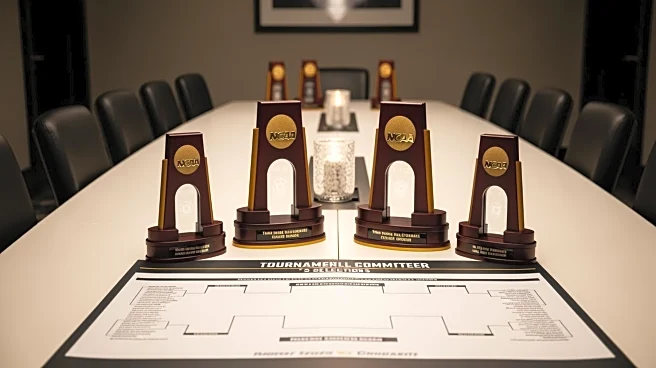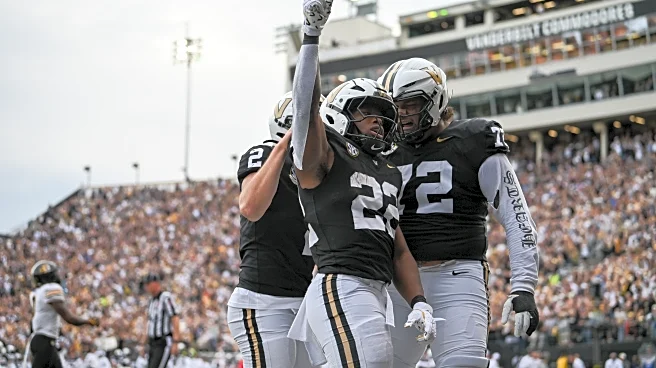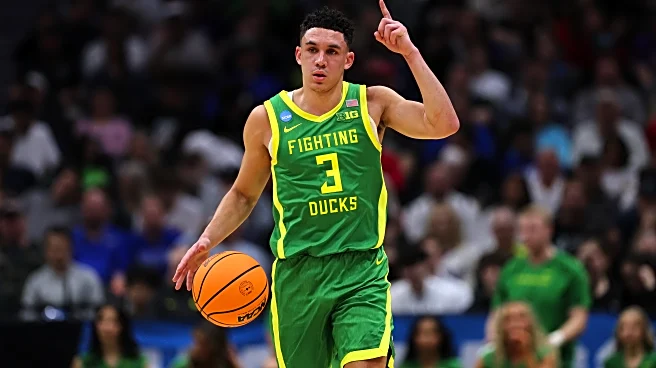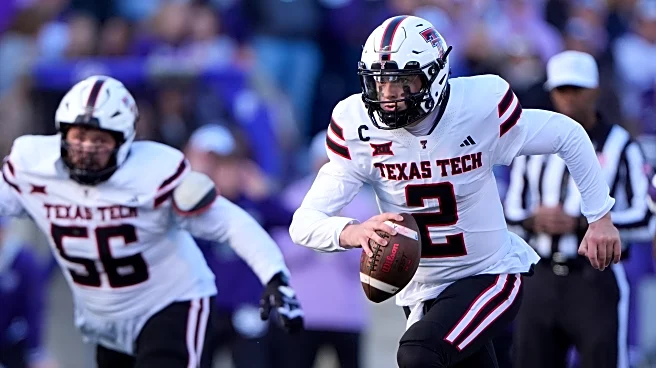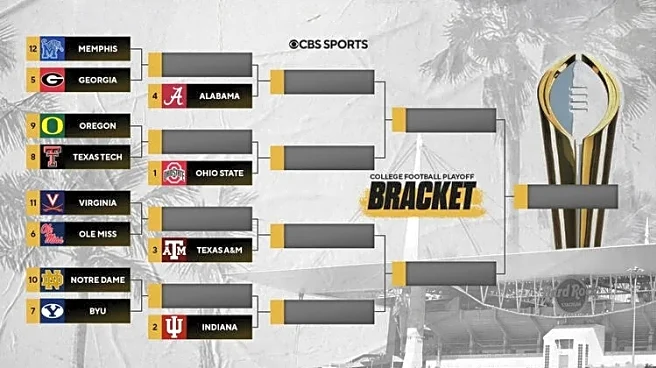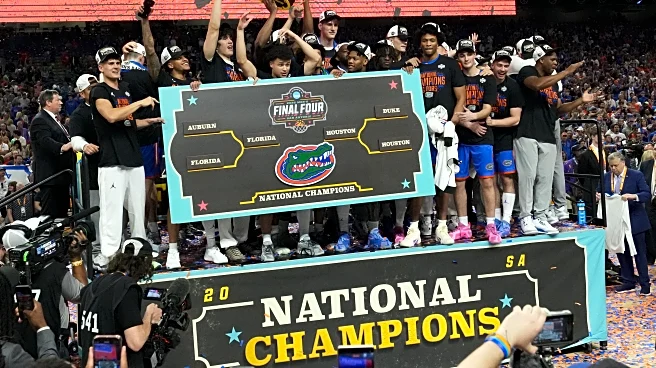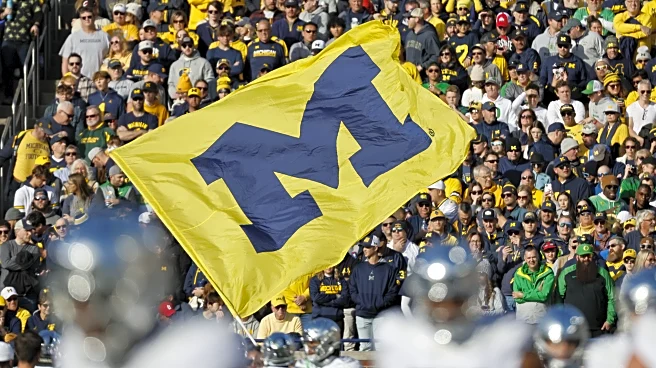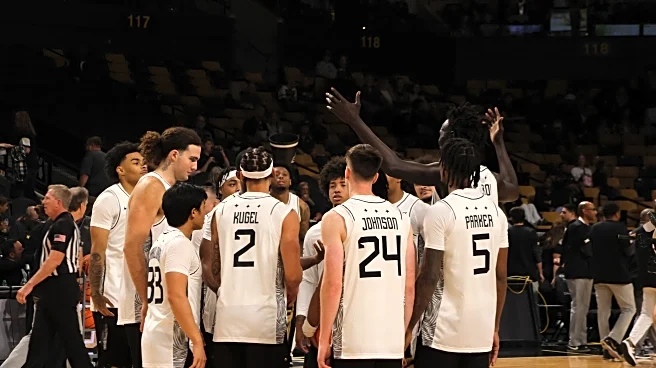What's Happening?
The NCAA volleyball committee is gearing up for the selection of teams for the women's college volleyball tournament, with the field of 64 set to be revealed on November 30. The committee will choose 31
automatic bids and 33 at-large teams, seeding the top eight teams in each region. Nebraska, Kentucky, Texas, and Pittsburgh have been identified as the No. 1 seeds, with Nebraska maintaining an undefeated record since mid-September. Texas, despite recent losses, remains a No. 1 seed due to its strong RPI ranking and schedule. The tournament's Final Four will be held in Kansas City, Missouri, on December 18, with the finals on December 21.
Why It's Important?
The selection process for the NCAA women's volleyball tournament is crucial as it determines the competitive landscape of college volleyball. The top seedings reflect the strength and performance of teams throughout the season, impacting their chances in the tournament. Nebraska's dominance and Texas's resilience despite setbacks highlight the competitive nature of the sport. The tournament provides a platform for teams to showcase their skills on a national stage, influencing recruitment, funding, and the overall growth of women's college volleyball.
What's Next?
As the selection date approaches, teams on the bubble, such as Marquette and Auburn, face critical matches that could determine their inclusion in the tournament. Auburn's upcoming games against Texas A&M and Texas are particularly significant. The committee's decisions will shape the tournament bracket, affecting matchups and potential outcomes. Teams will continue to compete for favorable positions, aiming to secure their spot in the prestigious event.
Beyond the Headlines
The tournament's structure, with regional hosts and a balanced bracket, ensures competitive fairness and geographical diversity. The emphasis on RPI rankings and top-25 wins underscores the importance of strategic scheduling and performance against strong opponents. The event not only highlights athletic excellence but also fosters community engagement and support for women's sports, contributing to broader societal shifts towards gender equality in athletics.
